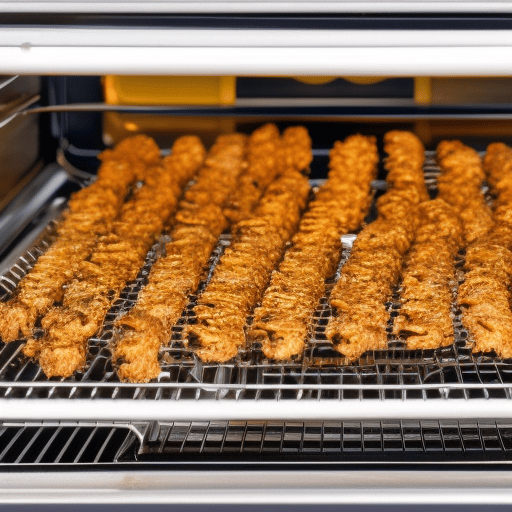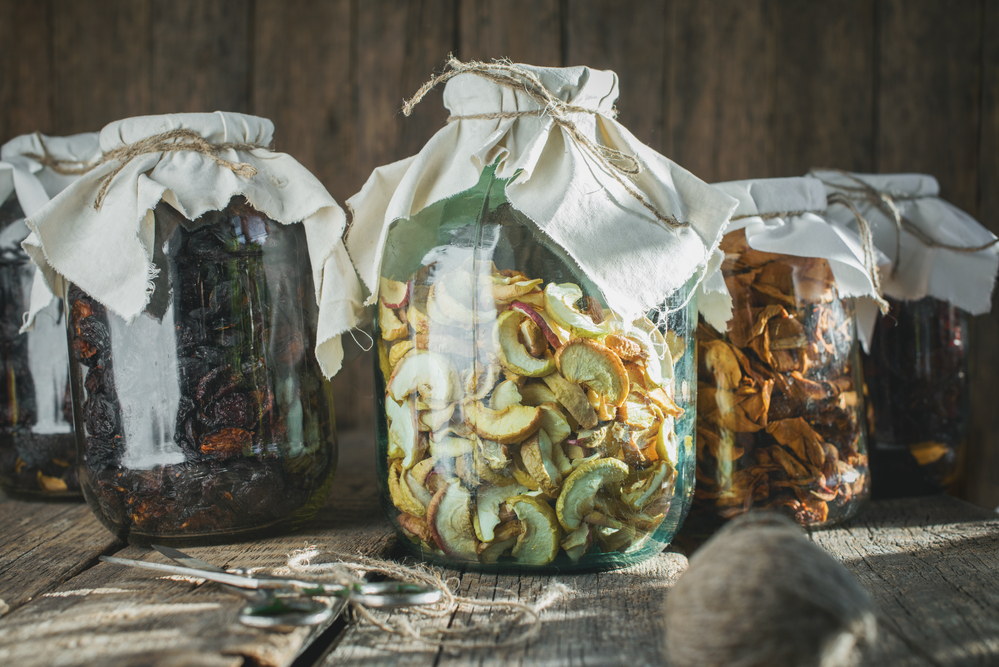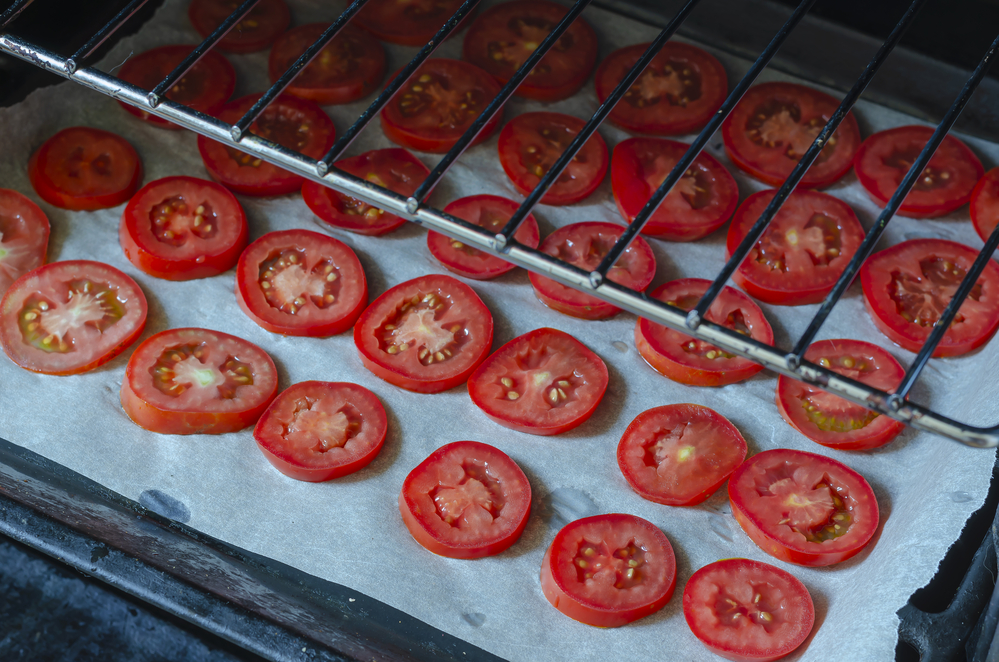Dehydrating food is a great way to create a healthy snack and give your food longer shelf life. It can also reduce waste by preserving food that is about to expire. Dehydrated fruit and other dried foods can be used in various recipes as well.
You may be interested in experimenting with food dehydration at home with all of these benefits. While the task would be easier using a food dehydrator, you can still dehydrate food without purchasing a new appliance.
This article will teach you how to dehydrate food without a dehydrator using six alternate methods, some easier than others. By the time you are done reading, you should be all set to any of the methods and make the perfect snack.
What Type of Foods Can Be Dehydrated?

You can dehydrate various foods like meats, many fruits, vegetables, and herbs.
When it comes to dehydrating fruit, apples, bananas, strawberries, peaches, and apricots are some of the easiest you can dehydrate. This is because they have a low moisture content and can be enjoyed in various ways, like trail mix or fruit leather.
Dehydrating meat is also common. One of the first things many people attempt to dehydrate without a dehydrator is beef. You can try out a basic jerky recipe without using a food dehydrator.
What Is Dehydrated Food Good for?
Many people dehydrate food as a method of preservation. You can prevent fruits, meats, and vegetables from turning by preserving them for consumption later.
Dehydrated or dried food is also suitable as a healthy snack. You can use dried fruits and nuts on your oats and cereals or as a salad topping. In addition, you can use dehydrated vegetables or ground beef crumbles in stews and soups. You even dehydrate meals so they can be stored or taken off-grid.
How to Dehydrate Food Without a Dehydrator: 6 Simple Methods
Method 1: Oven
The easiest method for dehydrating food involves using a standard oven, which you probably already have in your home. An oven is excellent for dehydrating fruits, vegetables, and meat. Follow the instructions below:
- Preheat your oven to 80 degrees Celsius. If your oven doesn’t have temperature options, this low set it to the lowest temperature possible.
- Cut your fresh produce or meat into 6 to 7 mm slices.
- Lay the meat or fruit slices on a cookie sheet or parchment paper and place them in the oven. Bake for approximately 6 to 10 hours, depending on how juicy the foods are. More succulent foods will take longer to dehydrate.
- Turn the food every hour to get more, even dehydration.
The only con to this method is that oven drying food requires you to leave your oven turned on for a considerable amount of time. In the summer, this can add unwanted heat to your home and regardless of what time of the year it is, it can also be costly.
Method 2: Microwave Oven
Your microwave can also be used as an effective way to dehydrate foods, especially herbs, apples, and other less juicy fruits. Your microwave can dehydrate quickly, but it is not great for dehydrating food with higher moisture content. Also, instead of a baking sheet or parchment paper, you will be using paper towels when dehydrating foods in a microwave oven.
Herb Dehydration Process
- Lay your herbs on a paper towel in a single layer and place them on the rotating plate inside the microwave oven.
- Microwave your herbs for 2 to 5 minutes on high.
- Flip the herbs every 30 seconds until done to prevent burning.
Fruit Dehydration Process
- Cut them into thin slices with an even thickness across the slice for apples and other fruit. About 60 mm thick or less should work.
- Lay your sliced apples evenly across the rotating plate in your microwave.
- Microwave the fruit for 30 minutes on the defrost setting.
- To avoid burning, flip the sliced fruit every 10 minutes.
Method 3: Toaster Oven

You can also use a toaster oven to dehydrate food. And actually, it can be a great alternative to using a regular oven because they often have lower temperature settings. Most toaster ovens are also more cost-effective and energy-efficient.
Toaster ovens are also good for dehydrating smaller batches of food. However, this means they are not good for dehydrating larger batches.
- Preheat your toaster oven to 80 degrees Celsius.
- Cut your fresh produce or meat into 6 to 7 mm slices.
- Lay the food, such as apple slices, on wax paper or a baking sheet and bake for 6 to 10 hours. The juicier the food, the longer it will need to bake to become dehydrated.
- Make sure to monitor the food in the toaster oven fairly closely to avoid burning. Turn it over approximately every 30 minutes to avoid burning.
Method 4: Smoker
You can also dehydrate food using a smoker. Using a combination of heat and smoke, you can dehydrate meat strips and make delicious homemade beef jerky. If you do not have a smoker, you will need to find a way to hang your meat, so it dangles above a charcoal grill.
With this method, you will want to watch the grill or smoker all day long to regulate the temperature as much as possible. Ideally, you will want to maintain a consistent temperature of 65 degrees Celsius while dehydrating food.
This method may be a bit trickier than other dehydrating methods, but as we said, it is great for dehydrating meats.
Method 5: Sun-Drying
Sun-drying food has been used as a dehydrating process for centuries. Solar drying can be effective for dehydrating specific kinds of food if you have the right weather conditions. The weather also needs to reach a temperature of at least 32 degrees Celsius.
The best foods to dehydrate through sun-drying include small fruits like berries and tomatoes, as well as herbs. To sun-dry food:
- Choose a location outside to dehydrate your food that gets direct sunlight all day and has decent airflow.
- Place your food on a flat pan when dehydrating tomatoes and other foods that can be sliced. Cut very thin slices.
- Cover your food with a thin mesh material, like cheesecloth, to keep flies and other bugs and animals away.
- When dehydrating herbs, tie them in a small bunch and wrap them in a cheesecloth.
- Place on a flat pan, or hang the herbs in a sunny place and leave them for a couple of days.
However, this method is not perfect. Solar drying can take a considerable time and relies on weather conditions. Unlike a heating element, the weather may not always cooperate.
Method 6: Fire Pit
Another dehydrating method that has been used for centuries is fire drying. This method is great for dehydrating meat but is also good for making dehydrated foods like fruits and vegetables.
You can either place thin slices of food on a grill over a small fire with lots of smouldering coals or lay them on the ground close by the edge of the fire. Place them at a distance that will give them low heat.
You need to maintain low temperatures to ensure you don’t simply cook the food. You should be able to hold your hand where the food is for several seconds before feeling excessively hot.
Like using a smoker or grill, you will have to watch and monitor the food when using this dehydrating method.
We have answered the question “how to dehydrate food without a dehydrator?” so you should be able to determine which method works best for you. But dehydrating foods at home, read on for some tips for improving the quality of your overall output.
Essential Tips for Dehydrating Food
Once you get started dehydrating food without a dehydrator, you can do a couple of things to improve the overall quality of your dried food, especially when it comes to fruits and vegetables.
Rinsing and Dipping
You can experiment with rinsing or dipping your fruit in a lemon juice and water mixture before dehydrating them to help preserve its colour. The citric acid in lemon juice helps lock the colour in the fruit while it dries.
Blanching
Vegetables like broccoli and carrots also tend to lose their colour when dehydrated. However, you can quickly blanch them with boiling water before dehydrating them to preserve their colour. Blanching them will also help remove any lingering bacteria on the vegetables.
Storage

How should you store dehydrated food? You must store dry food in an airtight container and preferably in a cool, dry location like a cabinet in your kitchen, the pantry, or a cellar.
Vacuum packing your dehydrated food will preserve it the longest. Airtight containers made from glass and metal are also great alternatives to vacuum sealing your dehydrated food.
Just try to avoid using plastic containers because, over time, it can allow some air to penetrate the contents, effectively shortening their shelf life.
Dehydrating Foods Made Easy
Now that you know how to dehydrate food without a dehydrator, what do you think? Will you be trying out one of our methods at home?
We recommend starting with whichever method seems most straightforward to you and doesn’t require you to purchase new equipment. It is also with less juicy foods, taking care to cut thin slices and making sure you monitor and flip the food while it dehydrates.
If you have questions about food dehydration or have tips to share, let us know in the comments section below. We’re excited to hear from you.

